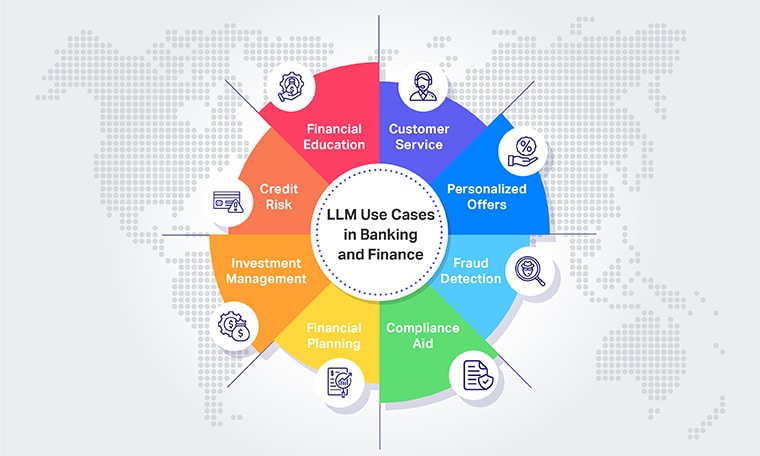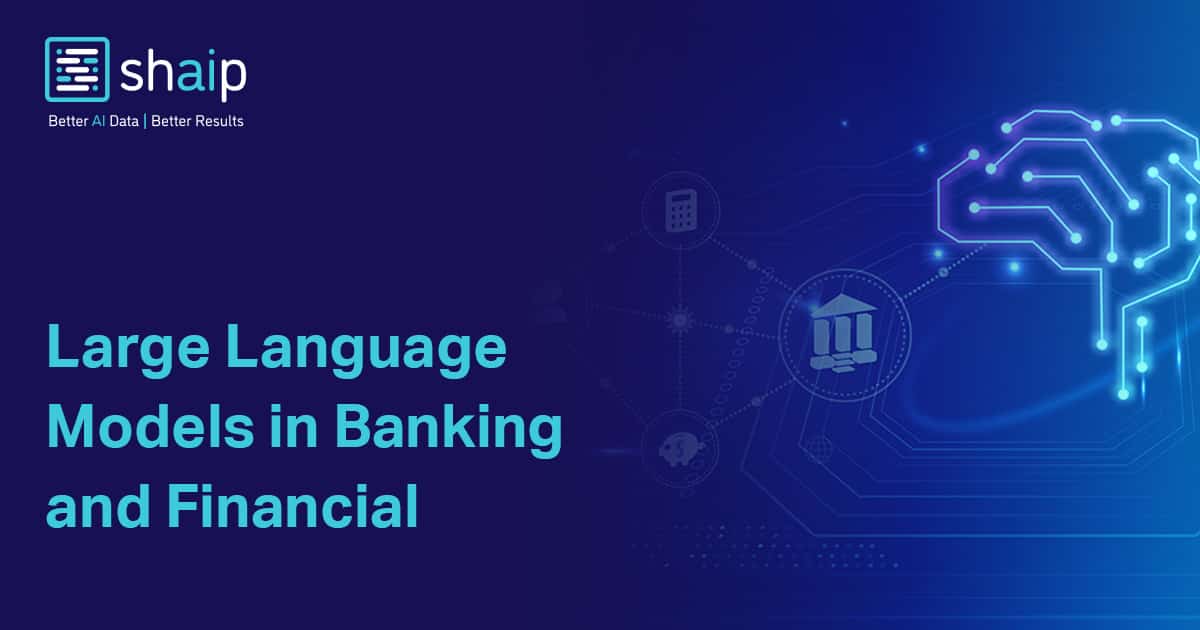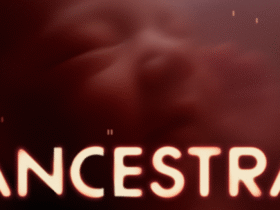In today’s fast-paced financial world, technology is reshaping the way banks operate. As they aim to improve customer service, streamline processes, and ensure compliance, a banking-specific Large Language Model (LLM) emerges as a game-changer. With the right training data, these models can transform everything from customer interactions to fraud detection.
The global banking sector is massive, with over $155 trillion in assets managed worldwide as of 2023. With such a vast reach, providing precise and efficient services is crucial. For instance, JPMorgan Chase handles about 43 million transactions daily, showcasing the potential impact of LLMs in enhancing operations and service quality.
By using diverse data sources like regulatory documents, financial reports, and customer interactions, banking-specific LLM can be tailored to meet the industry’s unique needs. This not only enhances the model’s ability to understand and generate financial language but also helps banks better serve their clients and navigate the complexities of the financial world.
Creating a Banking-Specific Large Language Model: The Training Data Guide
To build an effective large language model for the banking sector, you need the right kind of training data. But what exactly does this entail? Let’s explore the types of data that can help shape an LLM for the banking world.
The Language of Finance
To start, we need data that encapsulates the language of finance. This could include text from financial documents like annual reports, market analyses, regulatory filings, and news articles. LLM can process this type of information to learn the jargon, concepts, and trends associated with the banking sector.
Inside the Banking Domain
Next, we delve into the specifics of the banking domain. Here, the text data could come from banking websites, transaction histories, loan agreements, and even financial product descriptions. This data helps the LLM grasp the details of banking services, procedures, products, and the industry’s unique terminology.
Customer Conversations
An important aspect of any service-based sector is customer interaction. For this, we could use text data from customer service chats, emails, call transcripts, and feedback. This helps the LLM understand the language used by customers, their preferences, common inquiries, and complaints.
Navigating Regulations and Compliance
In the banking industry, regulations and compliance play a significant role. Training data in this context would be text from regulatory guidelines, legal documents, and compliance mandates. This equips the LLM to comprehend the banking industry’s regulatory environment, legal terms, and compliance-related aspects.
User-Generated Insights
Data from online platforms, where users discuss banking and finance topics, can be invaluable. User-generated content from forums, blogs, and social media provides insight into customer opinions and experiences. Thus, it helps the LLM understand the public’s sentiment toward banking products and institutions.
Behind the Bank’s Doors
Finally, text data generated within the bank itself, like internal reports, policies, and communications, can offer unique insights. This data can shed light on the bank’s specific processes, services, and internal terminology to make the LLM more attuned to the particular institution’s needs and language.
Essential Use Cases of Banking-Specific LLM Models
A banking-specific Large Language Model can serve a wide range of functions within the banking industry due to its ability to understand and generate language in a human-like manner. Here are some key ways it can be put to use.

Enhancing Customer Service
LLMs can greatly improve customer service by handling a significant portion of customer queries. They can be used in chatbots or virtual assistants to answer questions about banking services, troubleshoot common problems, and provide relevant information quickly. With an LLM, banking institutions can offer 24/7 customer support and relieve human agents from routine tasks to help them focus on more complex issues.
Providing Personalized Recommendations
The brilliance of LLMs lies in their ability to personalize the banking experience. Using their complex algorithms, they can go deep into a customer’s financial data, grasp their requirements and preferences, and subsequently put forth suitable recommendations for services like credit cards, loans, or savings accounts. This means customers are armed with the information they need to make the best decisions. Moreover, it’s a win for banks, as they can leverage these insights to sell and cross-sell their offerings optimally.
Fraud Detection
When it comes to fraud detection, LLMs prove to be an invaluable asset. They scrutinize transaction data and are adept at identifying anomalies that could signal potential fraudulent activities. This additional layer of security offers peace of mind to customers. For banks, using a strong system to prevent fraud helps a lot in minimizing risks and preserving their reputation.
Assisting with Compliance and Regulation
Banking is a heavily regulated sector. LLMs can help banks navigate these complex regulations by providing real-time updates on regulatory changes, assisting with the necessary documentation, and answering questions related to compliance issues. This ensures banks maintain compliance and reduces the risk of costly fines and reputational damage.
Facilitating Financial Planning
LLMs can also assist customers with financial planning and budgeting. They can help customers create a financial plan, track expenses, and provide tips on achieving their financial goals. This provides a valuable service to customers and helps them manage their finances more effectively.
Assessing Credit Risk
When it comes to lending, banks need to assess credit risk. LLMs can assist with this by analyzing various data points, such as credit scores, financial history, and income. Based on this analysis, the LLM can help banks make informed credit decisions, reducing the risk of loan defaults.
Managing Investment Portfolios
For banks offering investment services, LLMs can offer invaluable assistance. They can analyze market trends and provide recommendations on portfolio allocation. This can lead to more optimized portfolios for customers and assist them in meeting their investment goals.
Promoting Financial Education
LLMs can play a significant role in improving financial literacy. They can explain complex financial concepts and provide tutorials to customers. This not only empowers customers to make better financial decisions but also fosters a stronger relationship between the bank and its customers.
Creating a Customized Large Language Model for Insurance: A Comprehensive Training Data Guide
Training an insurance-specific large language model requires diverse and representative data that accurately encapsulates the insurance domain’s language and terminologies. Here are the different types of data sources that can serve as valuable training data.
Insurance Company Websites
Insurance company websites are treasure troves of data. They host policy details, claim forms, and frequently asked questions (FAQs). This data is rich with industry-specific language and can help the LLM understand the nuances of various insurance policies and the claims process. It also provides insights into how insurance companies interact with customers and explains complex terms and concepts.
Industry Publications
Trade journals, magazines, and newsletters from the insurance sector are other great sources of training data. They contain articles, case studies, and reports on various aspects of insurance, such as underwriting, risk assessment, and policy management. Using this data, the LLM can learn about industry trends, best practices, and challenges faced by insurance companies.
Regulatory Agency Documents
Insurance is a heavily regulated industry. Government agencies responsible for these regulations publish guidelines and rules that can serve as valuable training data. This data can help the LLM understand the legal and regulatory landscape of the insurance industry to ensure that it provides accurate and compliant responses.
Online Forums and Discussion Boards
Online spaces where people discuss insurance topics are also valuable. They host conversations on policies, coverage, and claims. This user-generated content can help the LLM learn how customers talk about insurance, the issues they face, and the questions they commonly ask.
Insurance Claims Data
Insurance claims data, such as anonymized claim forms and adjuster notes, can provide insights into the claims process. This data can help the LLM understand the language used in claims processing and the different factors that come into play during the process.
Training Manuals and Documentation
Insurance companies use training manuals and documentation to educate their employees. This content is ideal for training an LLM, as it provides comprehensive data on insurance practices, policies, and procedures in a structured and detailed format.
Case Studies and Legal Documents
Case studies, court rulings, and legal documents related to insurance claims and disputes offer rich training data. They can help the LLM learn about the legal language and terms used in the insurance industry and understand how insurance disputes are handled.
Customer Reviews and Feedback
Customer reviews and feedback can provide real-world data on how customers perceive their insurance policies and experiences. This data can help the LLM learn about common customer concerns, sentiments, and language used to discuss insurance experiences.
Industry Reports and Market Research
Market research reports, and industry studies provide data on market trends and customer preferences. This data can help the LLM understand the broader insurance market and stay updated on current trends and industry insights.
Social Media Posts and Blogs
Social media posts, blogs, and articles related to insurance can provide diverse and relevant data. They capture the language and tone used in more informal online communications about insurance, allowing the LLM to handle a variety of communication styles.











